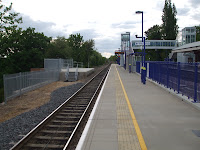So now that are doing an action thriller I have decided to review this video:
Camera Angles
A wide variety of camera angles used including ped-down, long shots, pans, over the shoulder shots and many more. features of character not revealed until quite a while into the beginning of the sequence to create suspense and to properly establish/introduce a new character.
Music
Non diegetic score digital connotes its modern and the guitar is a string instrument that creates tension in the title sequence which fades out after credits dips to black. blurred credits in time with sinister non diagetic music In time Dietetic sounds of the train creates continuity. Foley sound of a gun shot just before drums kick into the title.
Mise-en-scene
The prop of the news paper article created verisimilitude because it was designed like one and had large font which explained more of the plot "Criminal Master Mind Still At Large".
Another prop of a cigarette which is indexical the fact that he dropped it and stepped on it, connotes that he smoked it before as this is the habit people have experienced or seen. This could could interpreted two scenarios either nervous or rebellious.
The costume of black shoes black trousers black tie white shirt and grey coat symbolism a mysterious businessman.
body language of animated photographed guy tense as holding a prop of a gun.
Body language and facial expressions didn't connote much emotion as it was relaxed because he was just getting onto a train which isn't dangerous but seemed to be concentrating on reading the news paper.
Editing
Title sequence before scenes connotes action thriller immediately
blurred credits create mystery and tension
zoom out of title in capitals to show importance "Money" on black back ground fade from white to America dollars in text - fade out bigger the rest of the credits and
centered to reinforce importance
animation in credits - bold big credit not capitals "
Arial"
animated gun in sink with real gun being picked up
clear cuts to to give a false sense of security
fade to black to convey time movement
cut off going to sit down on the train
















